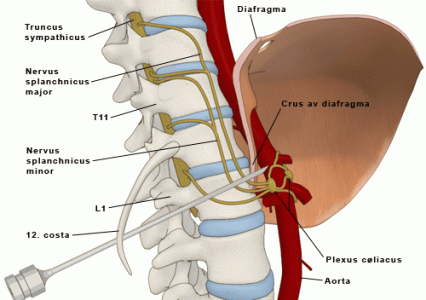Basic Facts and Information:
The Facet Joint is a potential source of Headaches and pain in the Neck, Shoulder, Mid-Back, Low Back, and Leg.
Facet injections found to be the 2nd most common procedure performed in pain clinics in the United States.
Facet joints are true synovial joints formed from the superior articular process of one vertebra and the inferior articular process of the vertebra above.
Facet joint injection is used as a diagnostic and therapeutic tool to confirm that facet syndrome is the source of your pain.
Diagnosing and treating facet syndrome and arthritis, can be an essential part of your treatment plan.
Facet injections are a minimally invasive no surgical treatment that is used as treatment for many different causes of neck and back pain. It works by reducing the inflammation and irritation in the facet joints of the spine that is causing you pain.
The syndromes most commonly requiring facet joint pain treatment include:
- Spinal Stenosis
- Herniated Disk
- Sciatica
- Spondylolysis
Procedure
The facet joint of the spine is a moveable connection that connects one vertebra (bone of the spine) to another. This injection includes both a long-lasting steroid and an anesthetic (lidocaine, bupivacaine). The steroid reduces the inflammation and irritation and the anesthetic works to numb the pain. The combination medicine then spreads to other levels and portions of the spine, reducing inflammation and irritation. The entire procedure usually takes less than 15 minutes
The Facet Injections and the Epidural Steroid Injections (ESI) are very similar but differ in the location that they inject the medicine. In an ESI, the medication is injected into the epidural space whereas in the facet injection, it is injected directly into the joint.
The Facet joint is getting its nerve supply from the nerve roots exiting from the same level of the joint and the nerve root exiting from the level above it. Most of the time the diagnostic block of the sensory nerve supply to the joint is used to pin point the pain source before considering the more permanent solution like Surgery or Radiofrequency Ablation.
There are lots of debates about which is better to be considered as first step to diagnose the problem, Facet joint injection Vs Medial Branch Nerve Block, but so far there is no more evidence suggesting one is superior than the other.
Benefits
The most important and greatest success achieved with the use of facet injections is the rapid relief of symptoms that allows patients to experience enough relief to become active again. With this they regain the ability to resume their normal daily activities that was not achieved with oral medications and physical therapy.
Another benefit to the injection with facet joint pain treatment is that it can be used as a diagnostic test to see if the pain is actually coming from the facet joints. If your pain disappears with the injection then it is clear that the pain is originating from the joint, and it has been shown that therapeutic lumbar facet joint nerve blocks with local anesthetic, with or without steroids, may be effective in the treatment of chronic low back pain of facet joint origin. (Manchikanti 2007). However, if your pain is unresponsive then this gives your physician information that can help him in diagnosing your condition.
A large evidence-based practice guideline for the management of chronic spinal pain with interventional techniques was developed by the American Society of Interventional Pain Physicians and provides recommendations to clinicians and patients in the United States. In regard to the facet injections, they state that the accuracy of facet joint nerve blocks is strong in the diagnosis of lumbar and cervical facet joint pain (Boswell 2007).
What is Facet Joint Injection:
A facet joint injection is a diagnostic tool that also provides therapeutic benefits. Facet joints are the small joints located between each vertebra that provide the spine with both stability and flexibility. Under fluoroscopic (x-ray) guidance, physician is able to accurately target the affected joint(s) — Facet syndrome occurs when one or more of these joints become inflamed or irritated. Arthritis occurs when the cartilage lining the joint surface shrinks and wears thin, causing stress on the bone (bone spurs), inflammation, and enlargement of the joint.
Facet joint injections combine a local anesthetic and a corticosteroid anti-inflammatory medication. This mixture relieves both pain and inflammation coming from the joint. A successful result, with immediate pain relief, supports the diagnosis that the facet joint is the “pain source” and the cause of the back pain.
How long the procedure usually takes?
These procedures are safely performed on an outpatient basis. Facet joint injections take 20 to 30 minutes including the preparation time. Radiofrequency Neurotomy (RFA) takes 30 to 60 minutes, depending on how many levels will be targeted. Each of these procedures is followed by approximately 30 minutes of observed recovery time.
Will I be getting Sedation while the procedure is done?
Usually it is not needed, but some patients request mild sedation for the procedure, but many patients undergo the injection using only local anesthetic at the skin.
For how long I will be getting pain relief from this procedure?
If the Facet joint injection helped with the pain level, it might help for various amount of time for up to 4 weeks or more.
The patient is asked to record pain levels during the first days of the procedure to ensure accurate diagnosis of the facet joints as the pain source. However, with pain recurrence, this will be a basis to try Radiofrequency Neurotomy for more sustainable pain relief for months to years.
** With Radiofrequency Neurotomy, most patients begin noting improvement within two weeks. Successful radiofrequency neurotomy typically provides relief for nine to fourteen months, and for some patients up to two years and beyond. These treatment approaches offer significant pain resolution without the potential risks and down time of surgery.










